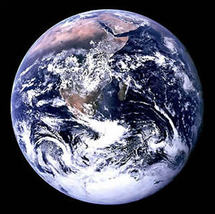
"Earth Overshoot Day" is determined by the last date in the year at which the planet's 6.7 billion people are living in balance with the planet's biocapacity.
That means in 2008 the period from September 24 to December 31 represents the time in which more resources are being consumed than the Earth can regenerate this year.
The overuse adds to a mounting global ecological "debt," says GFN.
The last full year when people were deemed to be living in resource equilibrium was in 1985, when the global population was around 4.8 billion.
In 2007, "Earth Overshoot Day" -- also called "Ecological Debt Day" -- was set at October 6.
The United States is the biggest ecological deficit spender, according to the campaign.
If all people adopted the American lifestyle, with its emphasis on large homes, mobility and voracious use of energy, the world's population would need 5.4 "Earths" to meet its needs, according to GFN figures for 2006.
Canada (with a lifestyle of 4.2 "Earths"), Britain (3.1), Germany (2.5) are also singled out as huge consumers of resources.
That means in 2008 the period from September 24 to December 31 represents the time in which more resources are being consumed than the Earth can regenerate this year.
The overuse adds to a mounting global ecological "debt," says GFN.
The last full year when people were deemed to be living in resource equilibrium was in 1985, when the global population was around 4.8 billion.
In 2007, "Earth Overshoot Day" -- also called "Ecological Debt Day" -- was set at October 6.
The United States is the biggest ecological deficit spender, according to the campaign.
If all people adopted the American lifestyle, with its emphasis on large homes, mobility and voracious use of energy, the world's population would need 5.4 "Earths" to meet its needs, according to GFN figures for 2006.
Canada (with a lifestyle of 4.2 "Earths"), Britain (3.1), Germany (2.5) are also singled out as huge consumers of resources.









 Home
Home Politics
Politics









